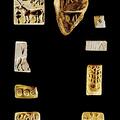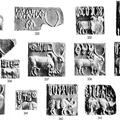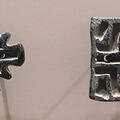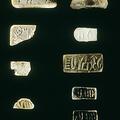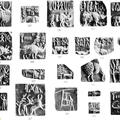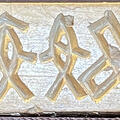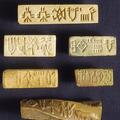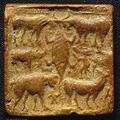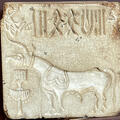Elephant (Elephas maximus). Mythological Creatures and Plant-Forms Seals
[Original 1931 text] This animal is on fifteen of the seals, Nos. 362-76. In fact, it may be said to rank next in order of popularity to the bull. On most of the seals it is carefully portrayed, in some cases even to the wrinkles along its back.


